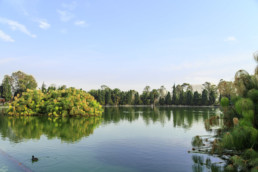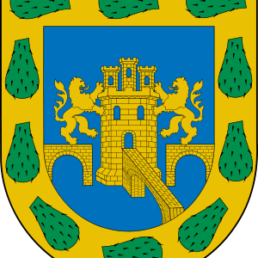Mexico City is revitalizing one of its most iconic parks in order to improve the area’s sustainability and make nature more accessible for all city residents.
Mexico City’s enormous Chapultepec Park is undergoing a makeover to become more connected to the city, more accessible to residents, and more environmentally friendly. The city created the Chapultepec Second Section’s Master Plan, in 2013, to address four priorities: to improve mobility options, to achieve better water and infrastructure maintenance, to organize merchants and vendors so as to optimize the use of public space, and to revitalize green spaces.

In order to make the park’s 6.86 million square meters more accessible and enjoyable for its 19 million annual visitors, the city plans to expand public transit via a 3.5-km long bus and cycling circuit and the creation of 16,500 square meters of sidewalks. The city will also rehabilitate fountains and clean lakes, install 500 solar-powered lamps, and create more maintained and accessible spaces for recreational activities. The plan seeks to break down the borders between the city and the park and to make nature easily accessible for all residents and visitors.
15% reduction in CO2 emissions through the reduction in car traffic in the park
The challenge
The Chapultepec Park is a beacon of nature in the bustling Mexican capital. Yet years of poor maintenance within the park, and low connectivity between the park and the rest of the city, left it underutilized. Chapultepec Second Section’s Master Plan seeks to reinvigorate the park by adding better features and services for visitors and making it more accessible to all.
Co-benefits
Economic The plan improves the quantity and quality of services available to visitors, such as public lighting, walkways, and squares, which will attract more visitors and increase sales of goods and services by park vendors.
Environmental More than 400 new trees were planted as part of the plan, and 15,000 square meters of green area were recovered.
Health Revitalizing open green spaces encourages sports activities, and newly built, safe pedestrian and cycling infrastructure invites visitors to experience the park on foot or on bike rather than by car.
Social Improving public transit options and internal walking and cycling networks makes the park more accessible to all citizens and visitors regardless of social class or car ownership.
About Mexico City
Mexico City is the capital and most populous city of Mexico. Mexico City is one of the most important financial centers in the Americas. According to the most recent definition agreed upon by the federal and state governments, the Greater Mexico City population is 21.3 million people, making it the largest metropolitan area of the Western Hemisphere. In recent years, the local government has passed a wave of liberal policies, such as abortion on request, a limited form of euthanasia, no-fault divorce, and same-sex marriage.


